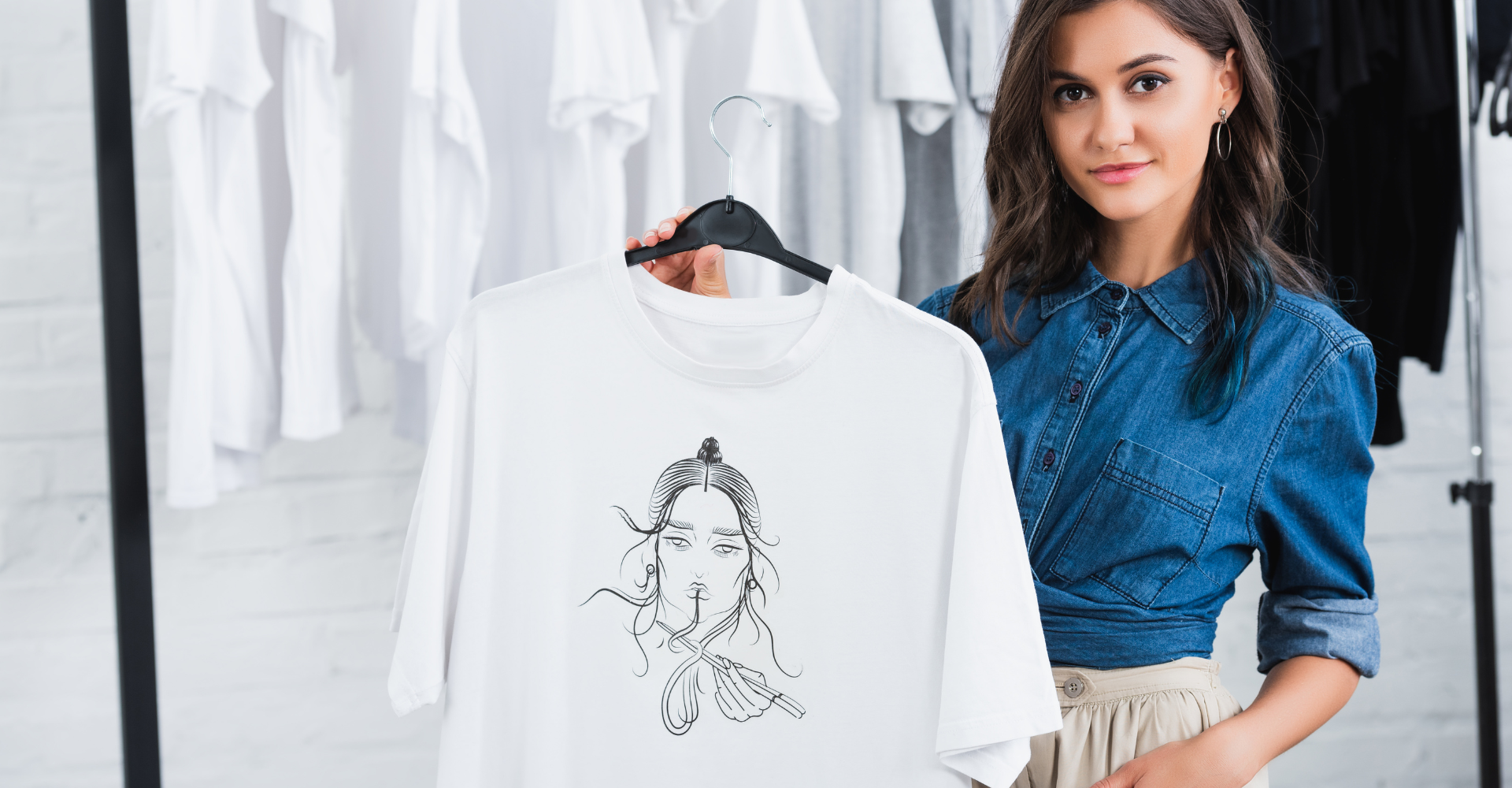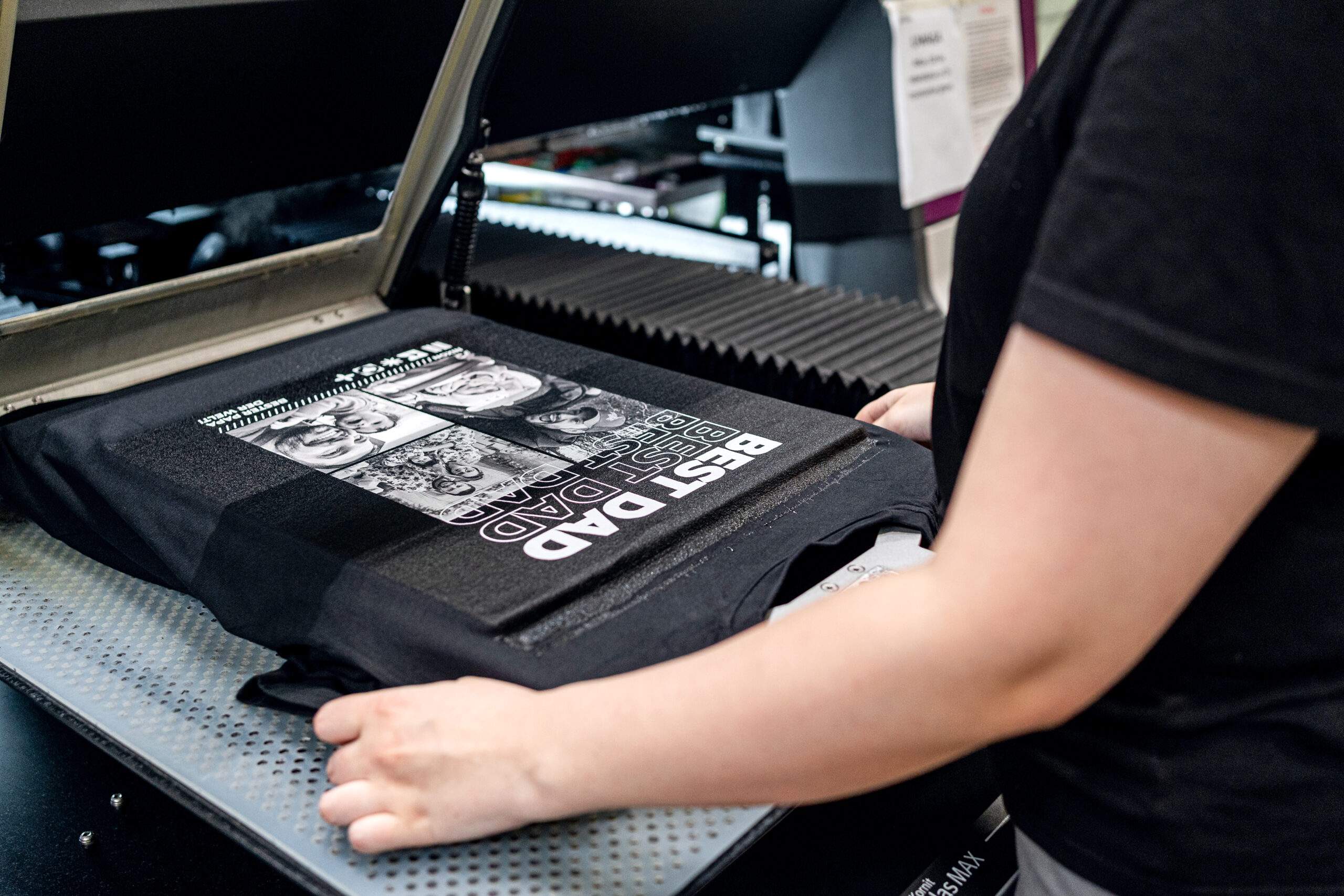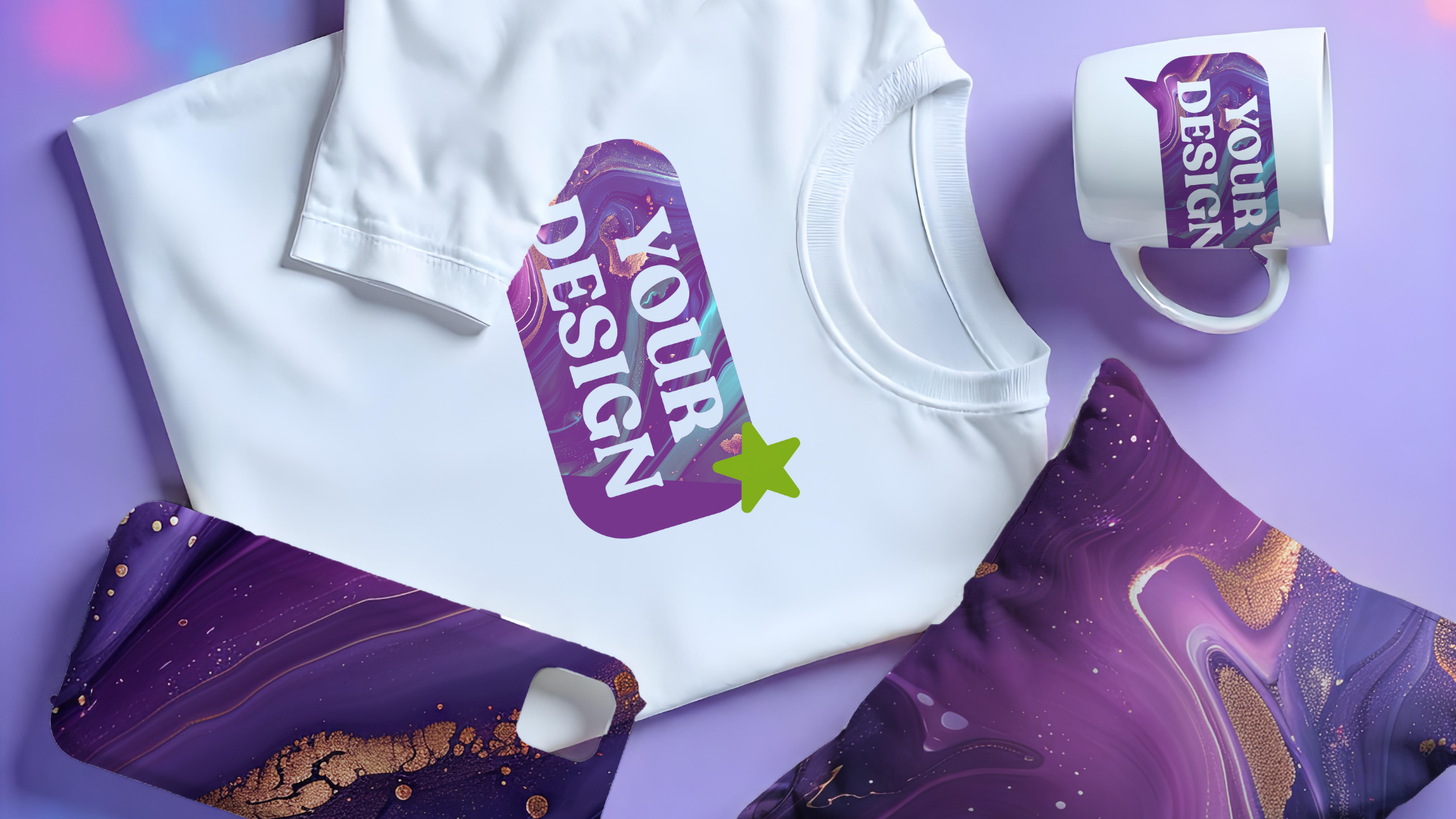
Are you just starting your adventure with print-on-demand and wondering what method of creating prints on clothes and textiles will be right for you? Below we present a short comparison of the three most popular methods of clothing marking – DTG, screen printing, and sublimation. How do they differ? What are their advantages and disadvantages? Read the article and everything will become clearer!
DTG (Direct-to-Garment)
DTG printing is a method of printing graphics, images, and text directly onto a garment using a specialized inkjet printer. The printer uses water-based inks that are absorbed by the fibers of the garment, resulting in a high-quality and durable print.
Here are some pros and cons of DTG printing:
Pros:
1. High-quality prints: DTG printing produces high-quality prints with vibrant colors and intricate details. The ink is absorbed by the garment fibers, resulting in a soft and comfortable print that won’t crack or peel.
2. Versatility: DTG printing can be used on a wide range of fabrics, including cotton, polyester, and blends. It is ideal for printing on t-shirts, hoodies, and other types of apparel.
3. Cost-effective for small orders: DTG printing is cost-effective for small orders because there are no setup costs or minimum order requirements. This makes it an ideal choice for businesses and individuals who need a small number of custom garments.
4. Environmentally friendly: DTG printing uses water-based inks that are eco-friendly and safe for the environment. The ink is also biodegradable and doesn’t contain harmful chemicals.
Cons:
1. Limited color range: DTG printing has a limited color range compared to other printing methods, such as screen printing. It may not be able to accurately reproduce certain colors or gradients.
2. Longer production time: DTG printing can take longer to produce than other printing methods, especially for large orders. Each garment must be printed individually, which can be time-consuming.
3. Costly for large orders: DTG printing can be more expensive for large orders because it is a slow and labor-intensive process. Screen printing or other methods may be more cost effective for larger orders.
4. Not suitable for all fabrics: DTG printing is not suitable for all types of fabrics. It works best on 100% cotton or cotton blends, and may not produce good results on synthetic materials.
In summary, DTG printing is a high-quality and versatile printing method that is ideal for small orders and eco-friendly printing. However, it may not be suitable for all fabrics and can be more expensive for larger orders.
Sublimation
Sublimation printing involves printing a design onto a special transfer paper using dye-based inks and then transferring the design onto the garment using heat and pressure.
Pros:
1. Vibrant and long-lasting prints: Sublimation printing produces vibrant and long-lasting prints that are resistant to fading and cracking. The dye-based ink penetrates the fabric fibers, resulting in a durable and high-quality print.
2. All-over printing: Sublimation printing is ideal for all-over prints and designs that cover the entire garment. The print can be seamless and continuous, resulting in a unique and eye-catching look.
3. Eco-friendly: Sublimation printing uses water-based inks and doesn’t produce any harmful chemicals or waste, making it an eco-friendly printing option.
4. Suitable for polyester fabrics: Sublimation printing works best on polyester and polyester blends, resulting in a high-quality and durable print. It can also be used on other synthetic fabrics, such as nylon and spandex.
Cons:
1. Limited fabric options: Sublimation printing is limited to polyester and polyester blends, which may not be suitable for all projects or preferences.
2. White or light-colored garments only: Sublimation printing can only be used on white or light-colored garments because the ink is transparent and won’t show up on darker fabrics.
3. High setup costs: Sublimation printing requires specialized equipment, such as a heat press and a sublimation printer, which can be expensive to purchase and maintain.
In summary, sublimation printing is a high-quality and durable printing method that produces vibrant and all-over prints. However, it is limited to polyester and polyester blends and requires specialized equipment and design considerations.
Screen printing
Screen printing is a printing method that involves creating a stencil or screen and then pressing ink through the screen onto a substrate (such as fabric, paper, or plastic) to create a printed design. Here are some pros and cons of screen printing:
Pros:
1. Versatility: Screen printing can be used on a wide range of substrates, including textiles, paper, plastics, and more.
2. Durability: Screen printing produces durable prints that can withstand frequent washing and wearing.
3. Large print runs: Screen printing is an excellent option for printing large quantities of items. Once the screen is made, it’s easy to print many copies of the same design.
4. Vivid colors: Screen printing can produce bright, vibrant colors that really stand out.
Cons:
1. Cost: Screen printing can be expensive, especially for small print runs. The cost of making the screen and setting up the equipment can make it less cost-effective for small orders.
2. Time-consuming: The process of making screens and setting up the equipment can take some time, which can slow down production and lead to longer lead times.
3. Limited detail: Screen printing is not the best option for printing highly detailed designs, as the process can be limited by the resolution of the screen and the thickness of the ink.
4. Limited color options: Screen printing is limited in terms of the number of colors that can be used in a design. Each color requires a separate screen and ink, which can increase the cost and complexity of the process.
5. Screen printing can have a slightly raised, textured feel to the print, especially if a thicker ink or more opaque ink is used.
Overall, screen printing can be an excellent choice for printing large quantities of items with bold, vibrant colors. However, it may not be the best option for smaller orders or highly detailed designs.
DTG, Screen Printing, or Sublimation – which one to choose?
All the described methods of decorating clothes have their own unique benefits and limitations. It is important to consider factors such as fabric type, print quality, durability, cost-effectiveness, and production time when choosing between sublimation, screen printing, and DTG printing. If you still don’t know which is better for your brand – contact us, and we’ll help you to find the best solution for your brand with print-on-demand.


